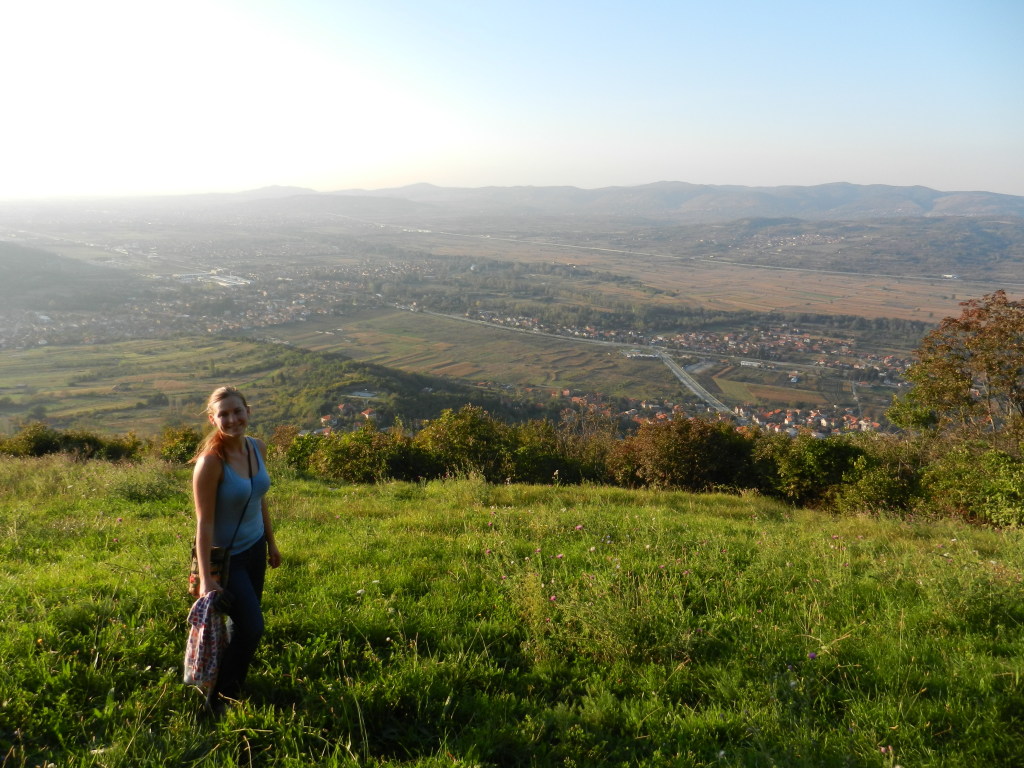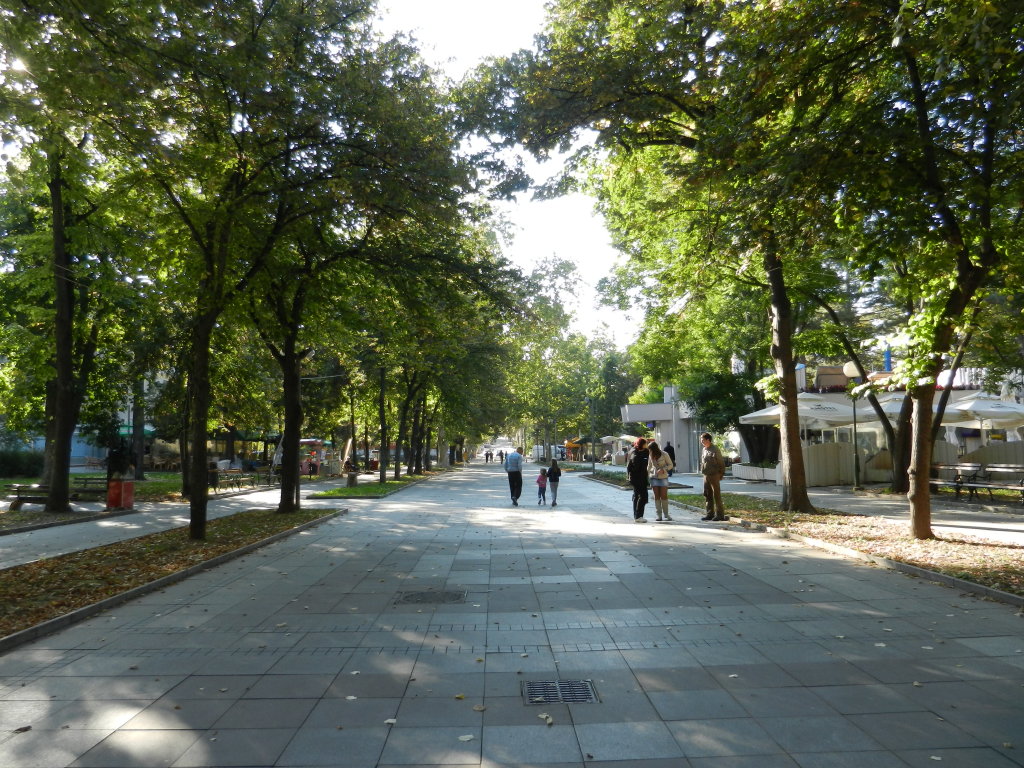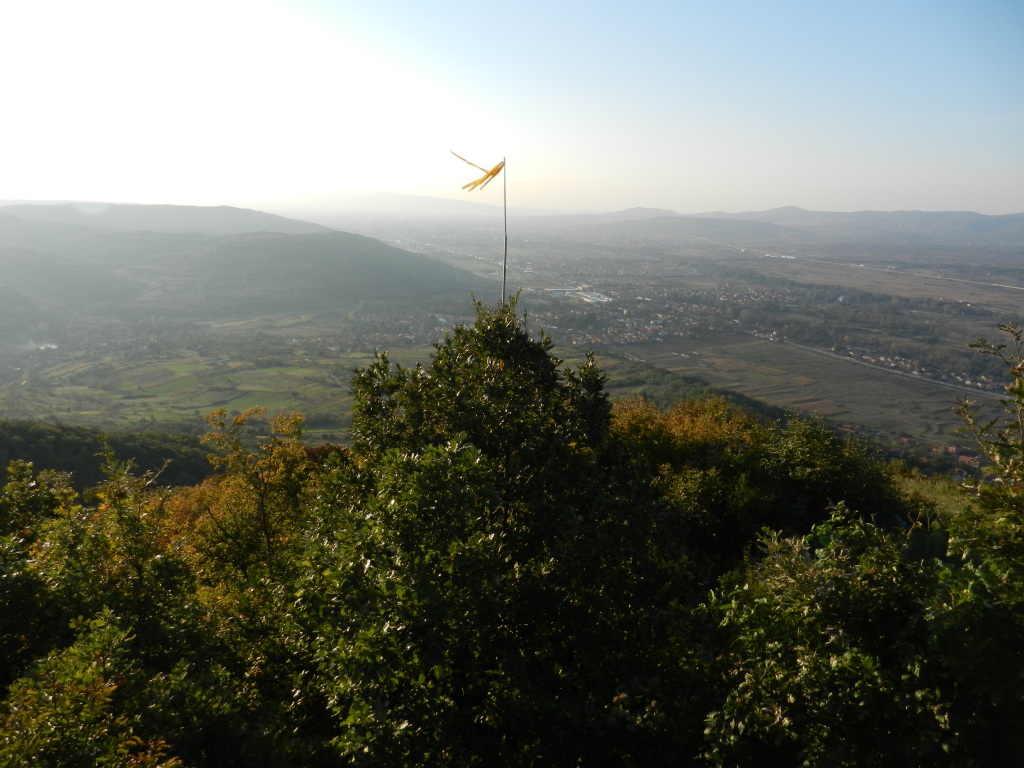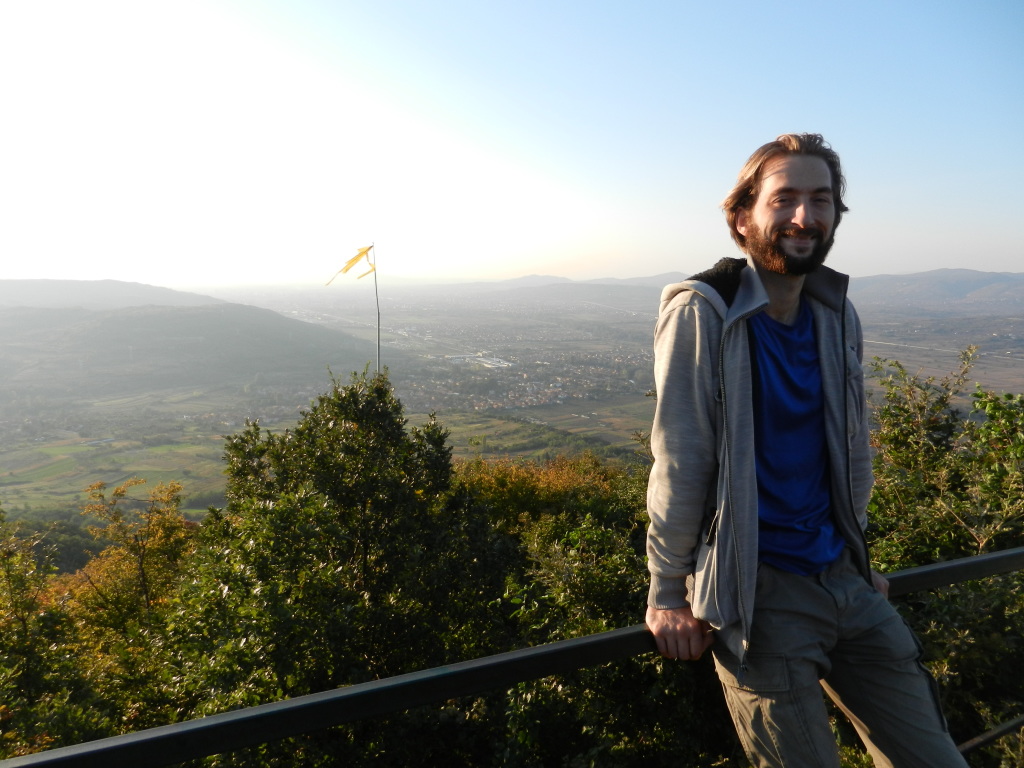We decided to take a bit of a vacation from volunteering to venture through Serbia and get a last taste of summer in Montenegro. First stop: Niš!
Isn’t that the best ice-cream sundae you’ve ever seen? We found this treasure at an adorable cafe decked out in old Tram décor. They had a few other really good ones on the menu. For us it was a toss up between the one above, titled “Adam and Eve,” and one called the “Viking Cup,” which looked like a deluxe sundae with two bananas speared on either side of the glass to look like Viking horns. A little expensive, but the picture alone was worth it.
Niš is the largest city in the southern half of Serbia, north-east of the Kosovo border. While we were curious about Kosovo, and might venture over in the future, we decided not to this time.We had been told that a Kosovo stamp in your passport means you’ll be barred entry into Serbia. Yup. But politics aside, Niš is a nice, little city that was the birthplace of Constantine the Great, the one who renamed Byzantium to Constantinople (which is now Istanbul, confused?).
There was more to keep us busy in Niš than we initially thought. The main gate of Niš Fortress is impossible to miss, facing one of the main bridges near the bus station. The fortress you see today was primarily built by the Ottoman empire, complete with hamams, mosque, and other Ottoman details, but the site had been used for a long time prior to the Ottomans arrival. Prior to the Ottoman construction, there were medieval forts, Byzantine fortifications, and even ancient Roman constructions. A lot of the site has been left open for the public to clamber over, which is fun but I can’t help being a bit of buzzkill and worrying about the loss of archaeological integrity.
Ćele-kula, the Skull Tower, is among the creepier monuments in Niš, evoking the same spooky feelings that the Bone Chapel of Kutna Hora gave. The tower was constructed by the Ottomans after the 1809 Battle of Čegar using the skulls of the Serbian revolutionaries as a warning to those thinking to oppose the Ottoman empire. Today the monument has come to to be a symbol of Serbian independence. Originally constructed of 952 Serbian skulls, only 54 remain in the monument today.

Taking the bus just a little further out of town to the little spa town of Niška Banja. Things had quieted down in the pretty little parks and around the fountains, but the falling leaves made strolling down the promenade romantic all the same!
That night we decided to go for a walk around town, looking for something tasty. Wandering aimlessly down alley after alley, we finally got so hungry that we stopped at a bit of a hole in the wall. Tentatively, we peeked into the restaurant interior, which was a little bit hazy from smoke but cosy and cute. We settled in and the waiter came over and started rattling off what we assumed was the menu, until our bewildered looks finally prompted him to ask, “English?” We nodded in relief, only for him to say that he knew very little and that the menu was only in Serbian. But, he gave us a couple of recommendations and off we went. The salads were delicious, a shopska-style salad with lots of cheese that you see in a lot of Eastern Europe, and an amazing eggplant-tomato mix. Feeling happy and full after our salads, we sat back with our beers to digest a bit before heading out. Little did we know that we had actually ordered two courses, and that was basically just the starter. Out came two hearty, pork dishes, one topped with some sort of cheese sauce (possibly kaymak?) and the other topped with garlicky veges. Sooo good, but you practically had to roll us home.
Serbia, and most of the other countries in the region, has been the scene of a lot of political turmoil over the past century, to put things mildly. During the German occupation of Niš in WWII, Niš became the site of the first concentration camp in Yugoslavia. Crveni Krst concentration camp is one of the few fully-preserved camps left in Europe. In February of 1942, it was also the scene of an organized mass escape of prisoners. 105 prisoners managed to successfully escape the camp that night, but it was a brutal, hard-won escape through gunfire and barbed wire. Everything stands today more or less as it was, including the old wooden guard towers that were replaced during the war with new, concrete towers.
Our last stop in Niš was Bubanj Memorial Park. During World War II the park was a site used by the Nazi execution squads, and thousands of innocent people were buried in mass graves. In an attempt to cover their tracks before the Germans withdrew from Serbia in 1944 they made captives dig up the graves and burn the bodies. In homage to those executed in the park, a 23 metre long marble relief tells the story of the execution and firing squads, civil revolts, surrender of the German invaders, and the final victory over the German oppressors. Behind the relief, three clenched fists are thrust toward the sky, representing the men, women, and children that defied the enemy.
Our AirBnb host invited us out on the town a few nights before we left Niš, and we had a great time chatting and knocking back cheap shots of Rakia. Limping along with a bad hangover the following day, we were relieved not to have to try and keep up with our new Serbian friends on a regular basis (pro-partiers, we didn’t stand a chance). Oh well, we said our goodbyes to Niš knowing that we’ll be back in Serbia soon! After a little fun in the sun… 😀



